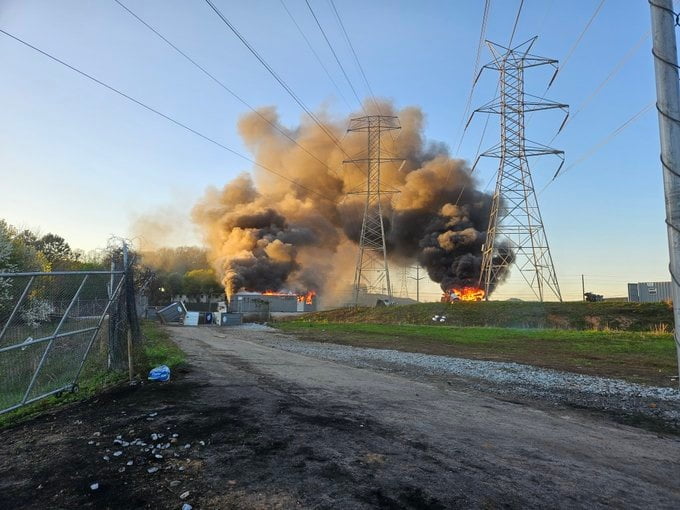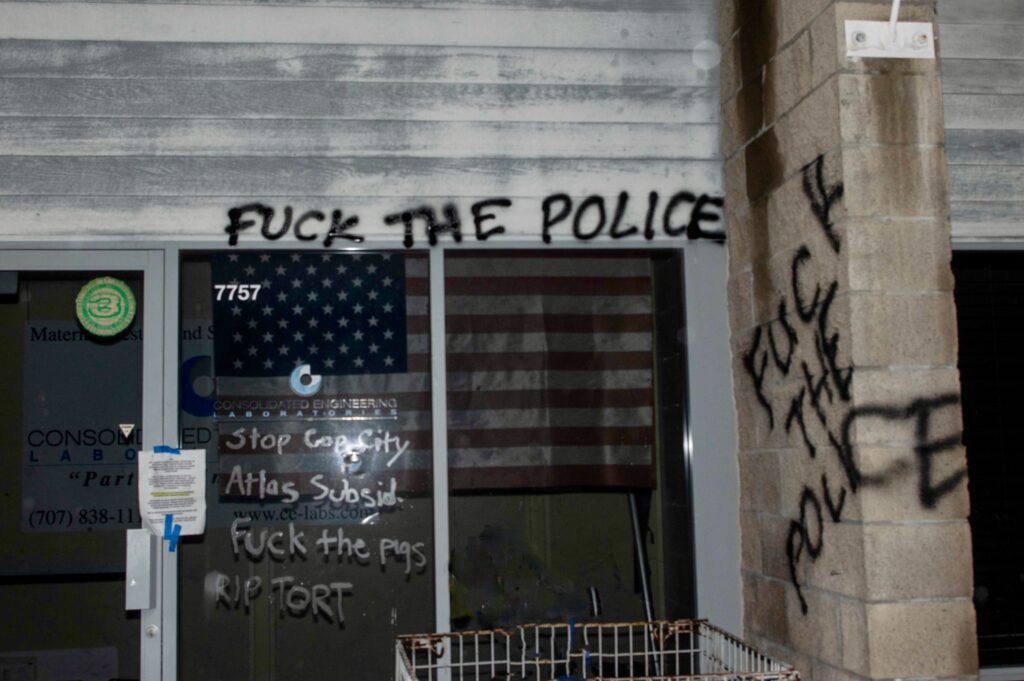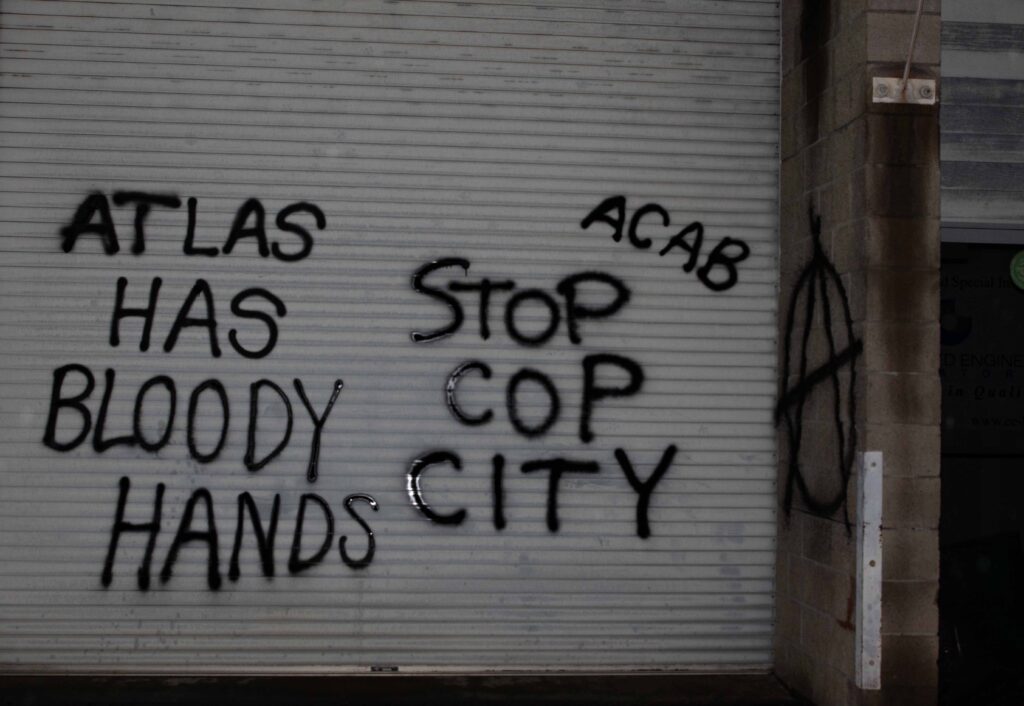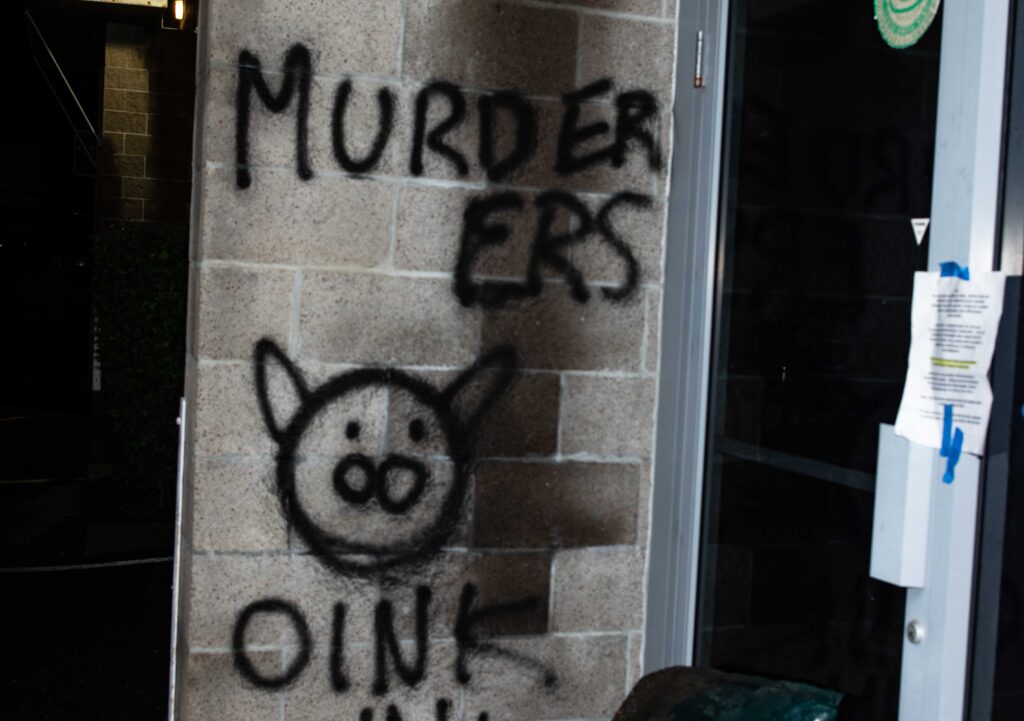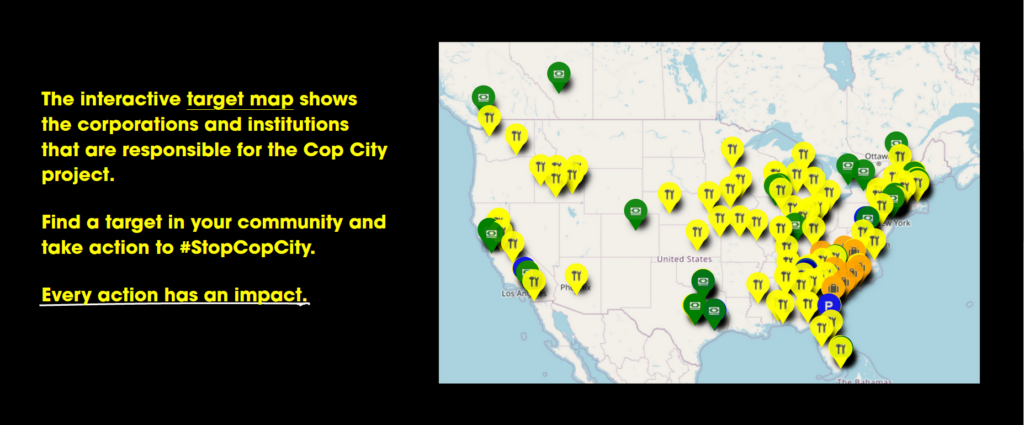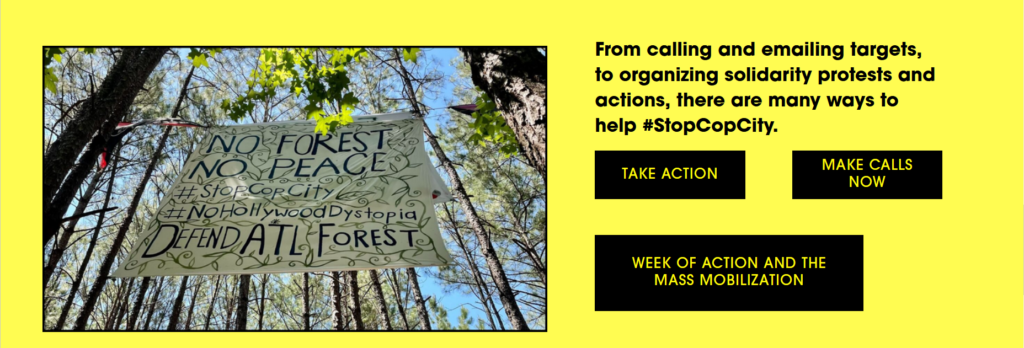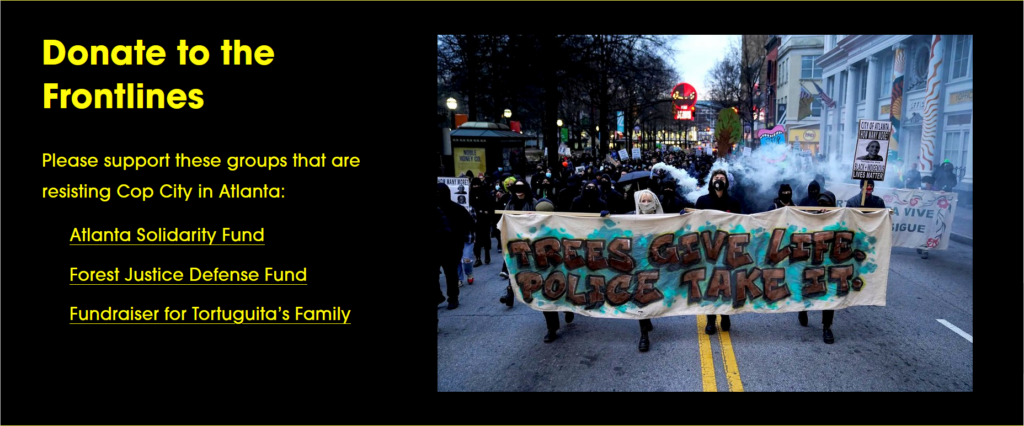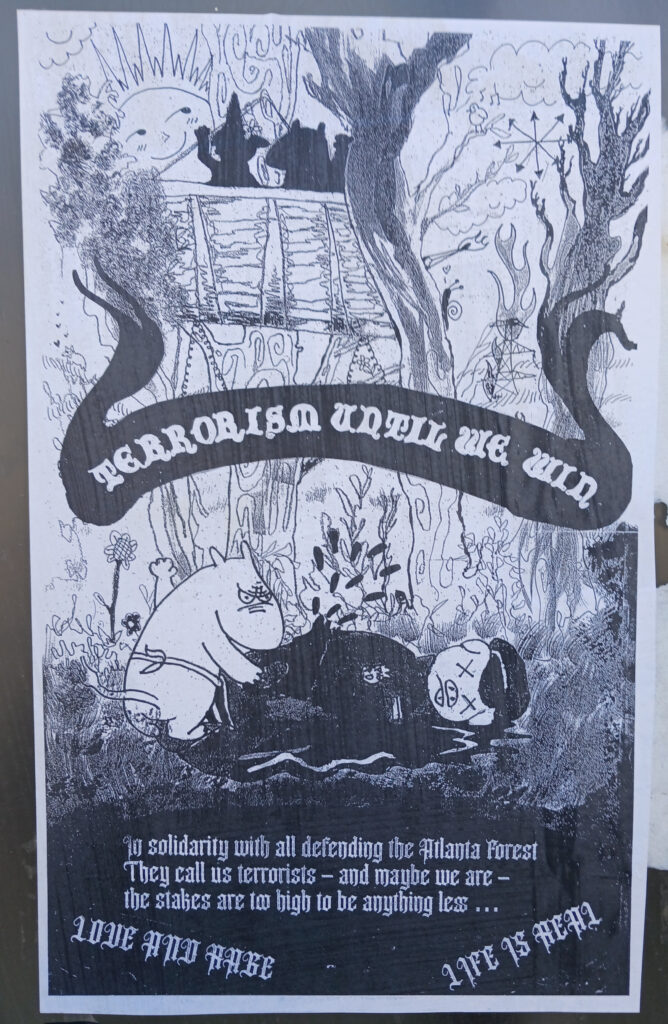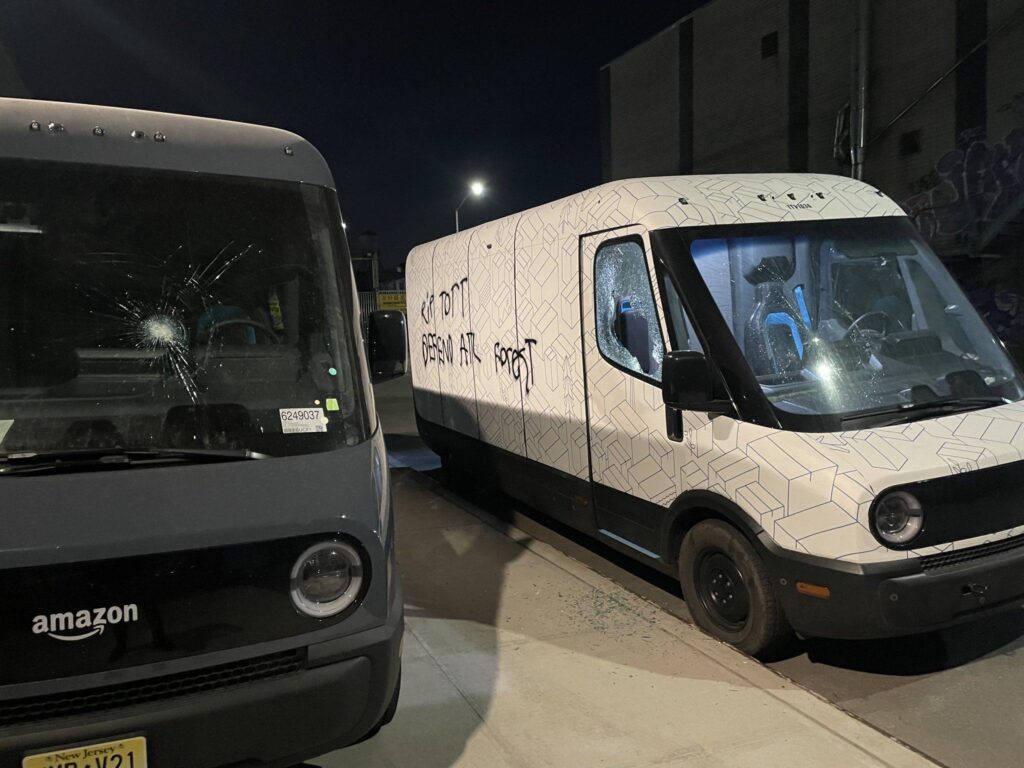Download pamphlet: Print – Tabloid
Download action poster: Print – Tabloid [For a Risograph]
A banner dropped in Eugene, OR this past February read “Against Cop City and Its World.” These words have come to echo throughout Atlanta and across Turtle Island, indicating that the struggle extends far beyond the construction of this particular police facility. But what exactly is “the world” of Cop City?
One interpretation has to do with the strategy of secondary and tertiary targeting. This past winter, night owls across the country have set their sights beyond the state officials behind the Cop City project, focusing instead on the contractors hired to build it and the banks and corporations funding it. This is a practical approach to stopping this specific project — sabotaging the offices of contractors like Atlas and Brasfield & Gorrie is intended to put pressure on them to drop their contract with Atlanta, which would make it harder for the city to move forward with its plans.
Many of the communiques accompanying the actions we’ve seen this season state this as their goal. A claim for an action against an Atlas office in Detroit included the warning, “Atlas, until you stop supporting Cop City, there will be no safe corner for you on Turtle Island.” A communique out of Indiana writes that all executives and property of Atlas should be considered legitimate targets “until Atlas publicly announces that it will no longer work on the project.”
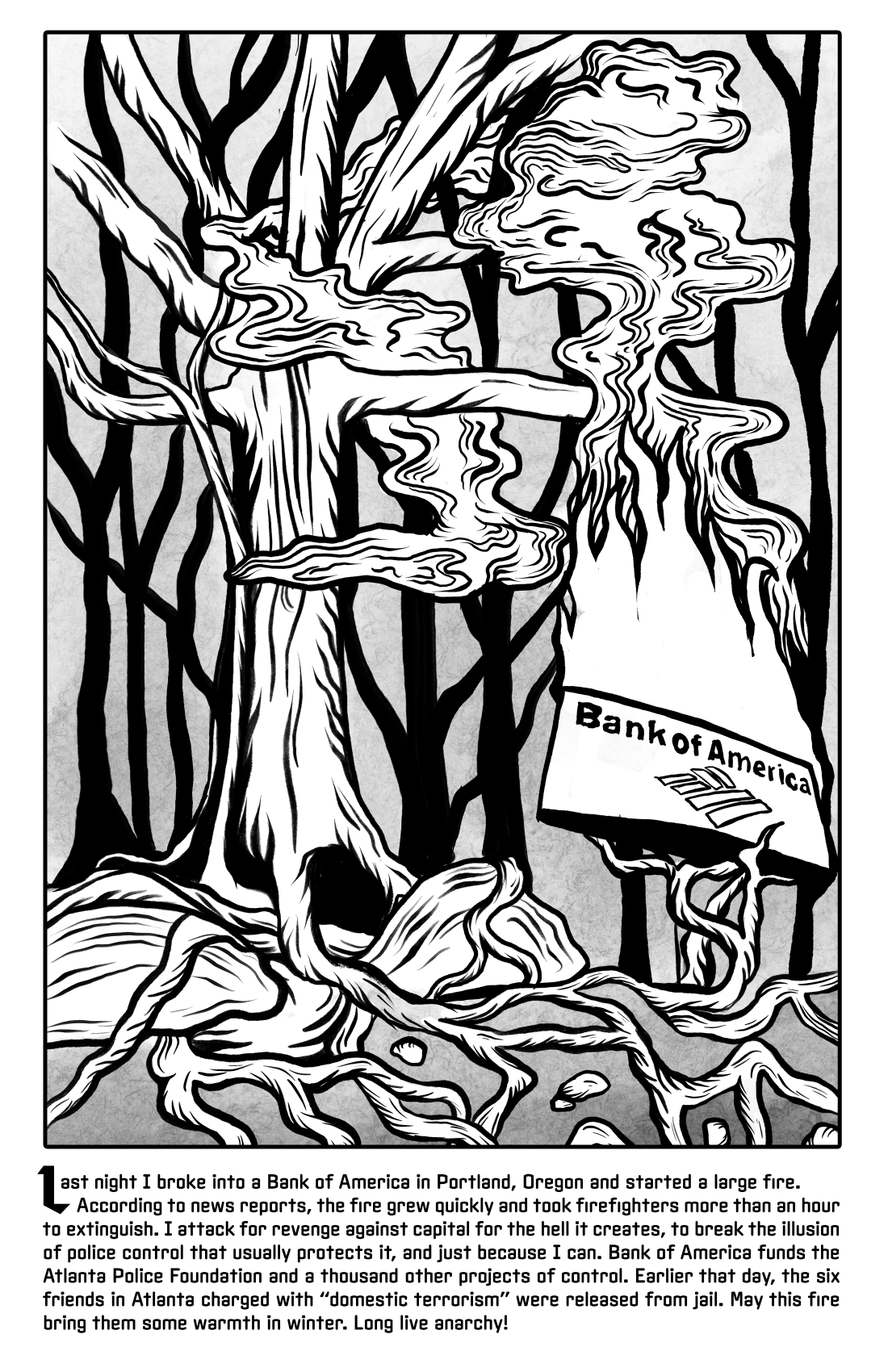
Additional communiques from this winter’s solidarity actions with Atlanta — to our knowledge, only a handful of claimed actions took place that were not Atlanta-related — clarify their opposition not just to Cop City but to the world that needs it. In many cases, they do this by drawing connections in writing to additional struggles that the authors see as interconnected. In other cases, this projectuality that aims to destroy both Cop City and the world that makes it possible is embodied in the choice of target. Many of this winter’s actions expanded from the more “precise” choice of targets like Atlas offices and into the wider world of exploitation and domination, which, after all, would likely just find a replacement for Atlas elsewhere if the contract was dropped. This is not to minimize the significance of actions against contractors, but rather to consider some critical questions being raised and experimented with through action, a powerful and beautiful dynamic that we were happy to see growing this winter.
Night owls in the Ozarks sabotaged “four forest-killing machines,” writing that their action was taken in solidarity with “forests under siege everywhere” as well as with the Atlanta forest. This thought was echoed later by Portland anarchists, who similarly took up a solidarity action that burned a machine unrelated to the specific contractors of Cop City. Other actions, like ones in Durham and Oakland, were dedicated to Tortiguita, who was murdered in the Atlanta forest in January, as well as to Tyre Nichols and others recently executed by the police.
Anarchists in Denver remind us that that the violence of US-based private extraction companies extends beyond US colonial borders, acknowledging “the murder of three land defenders in Honduras since the beginning of the year.” In another communique, Brooklyn anarchists included shoutouts to “the struggles in Latin America, the Palestinian struggle and the struggles against exploitation the world over” alongside their solidarity with Atlanta.
But there are also ways in which these struggles, regions, and systems of oppression are materially and logistically interconnected. A handful of actions in solidarity with Stop Cop City have turned their focus to this aspect of Cop City’s world. In a communique about an action against Norfolk Southern, three weeks after the catastrophic derailment in East Palestine, Ohio, anarchists in Philly wrote that they chose this target not only because NS is itself a funder of Cop City, but because “large shipping companies like NS are the circulatory system of industrial colonialism.” The authors illustrate this by discussing how rail and other logistics provide the means through which industrial agriculturists move their soy and corn, loggers get lumber to and from mills, and Amazon gets shipping containers from ships to distribution centers. “Perhaps NS funds cop city because they understand both how crucial they are in building a dead world and exactly how vulnerable they are.”
There’s been a lot of talk of winning with regard to the fight in the forest, but in a world whose brutal domination and exploitation extends so much further than one police facility in one city, what exactly constitutes a victory? Continue reading “Night Owls #4: Winter’s Embers” →

